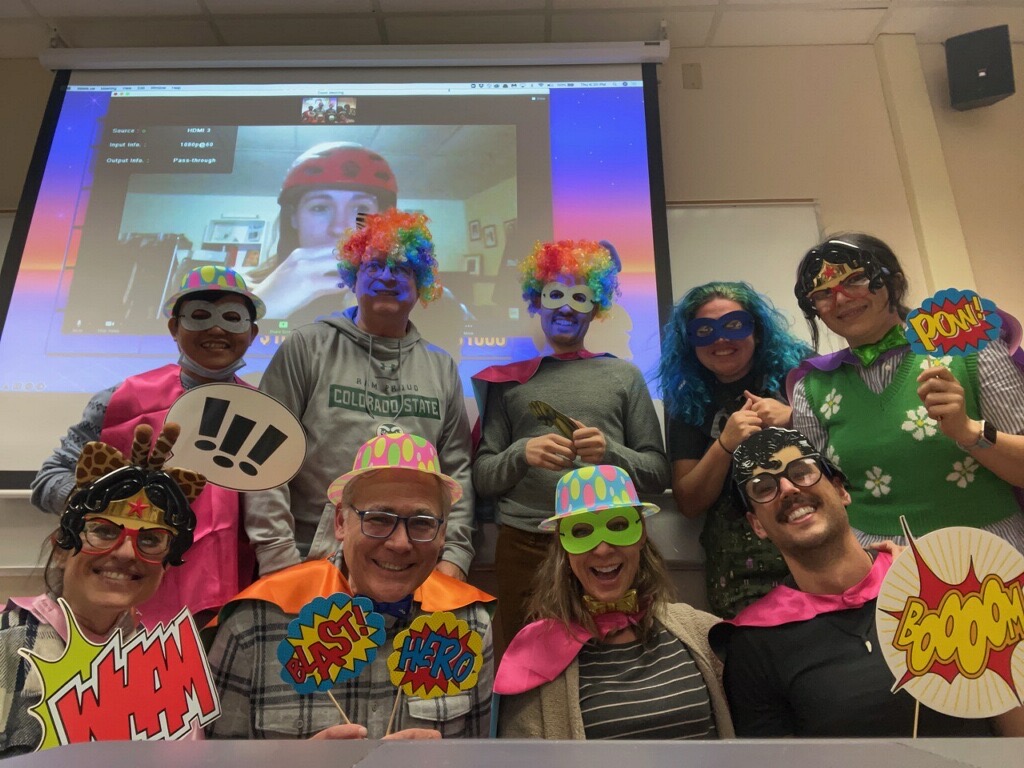
Lily padding is a technique for…
jumping from idea to idea towards the goal of generating / discovering connections and narrative arcs as we* go. [*We’re the hoppy happy frog in this scenario]. It’s about leaping around to create new meaning.
And this is good why?
- The exercise is fun–especially if you do it with a few people and share out your results.
- It can help break writer’s block.
- It can also help you practice a skill needed for good research writing where it’s good to be able to take bits of existing data (text quotes, key ideas, survey data, etc.) and constellate them together in your own voice as part of a new arc.
- Related to 3, lily padding helps you combine the skill of lifting up existing voices, data, and ideas while curating them together in a way that is all you. In other words, good research is a blend of old and new, past voices and your own present / future voice.

Practicing lily padding helps you avoid the trap in your actual research of either ONLY boring us what others have already said and adding nothing of your own or ONLY blasting us with your new ideas rooted in nothing that has come before. Don’t bore us; and don’t blast us. Lily pad us instead.
How do I do it?
Choose a random number (or come up with a creative process for generating a random number– perhaps add the numbers of today’s date plus your birthday month, or etc.!). This is your lily pad number.
Choose three books (at random, but it’s best if they are three very different kinds of books; i.e. it’s less fun if it’s three Aquinas texts or three cookbooks, etc.–so curate a bit to try to ensure variety, but don’t overthink it!).
Open the books to the page number corresponding to your lily pad number. (If your lily pad number is too large, create a procedure for translating it into a smaller number: e.g. if your number is 503, you can remove the zero and make it 53 or 35– or you can add 5 + 0 + 3 to yield an 8, etc.)
Point randomly on the pages. Write down the sentences you point to. You can write one or a few sentences, but keep it in the vicinity of where you pointed. And if you get a blank page or a picture, you can either use that as a data point or you can manipulate your lily pad number to generate a revised number till you get to a page with text (i.e. if you have a 37, you can flip it into a 73 or add 3 + 7 to get 10…).
You should now have three sentences or ‘sentence sets’ in front of you.
Set a timer for 15 minutes. Write something reflective, or humorous, or even oracular (in the spirit of ‘sounds deep but I’m not quite sure what I’m saying’) that incorporates as many key elements as possible from all the quotes.
(To clarify: You can use the quotes verbatim or not; mostly, just try to let the three quotes wash over you until they inspire you to engage them in a surprising way).
If you can pull three random quotes from three random books together in some creative way, imagine how effective you can be when engaging material you have actually spent years thinking about!
